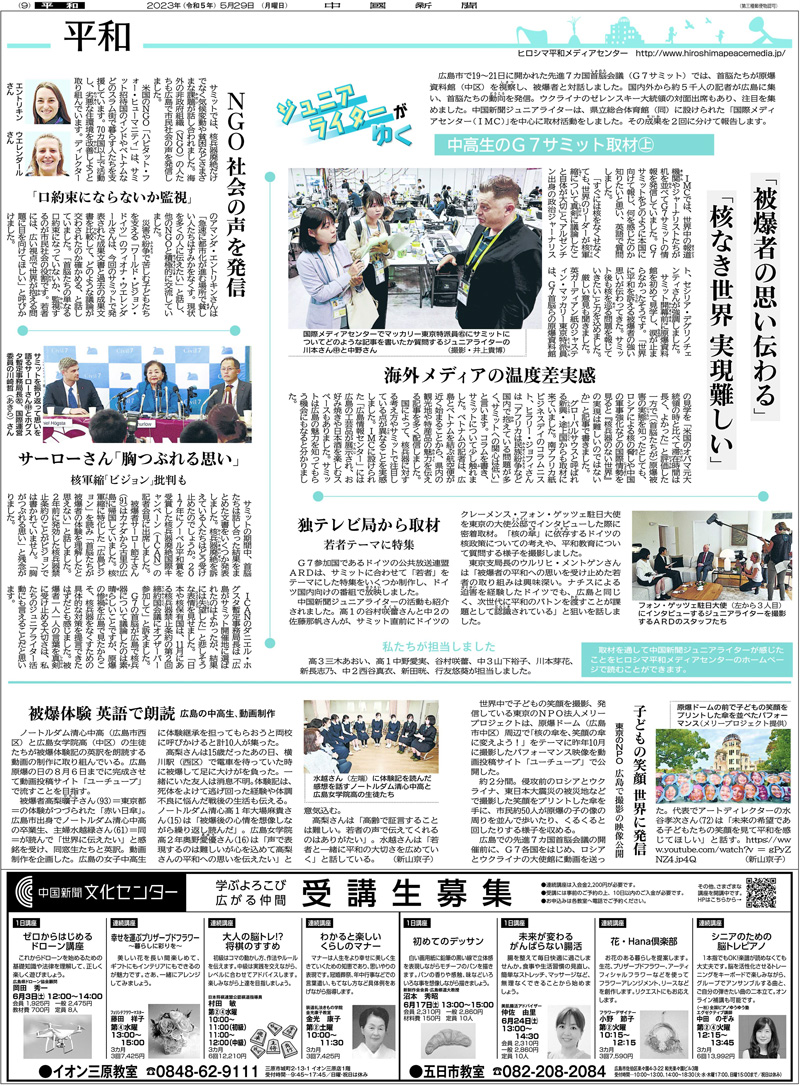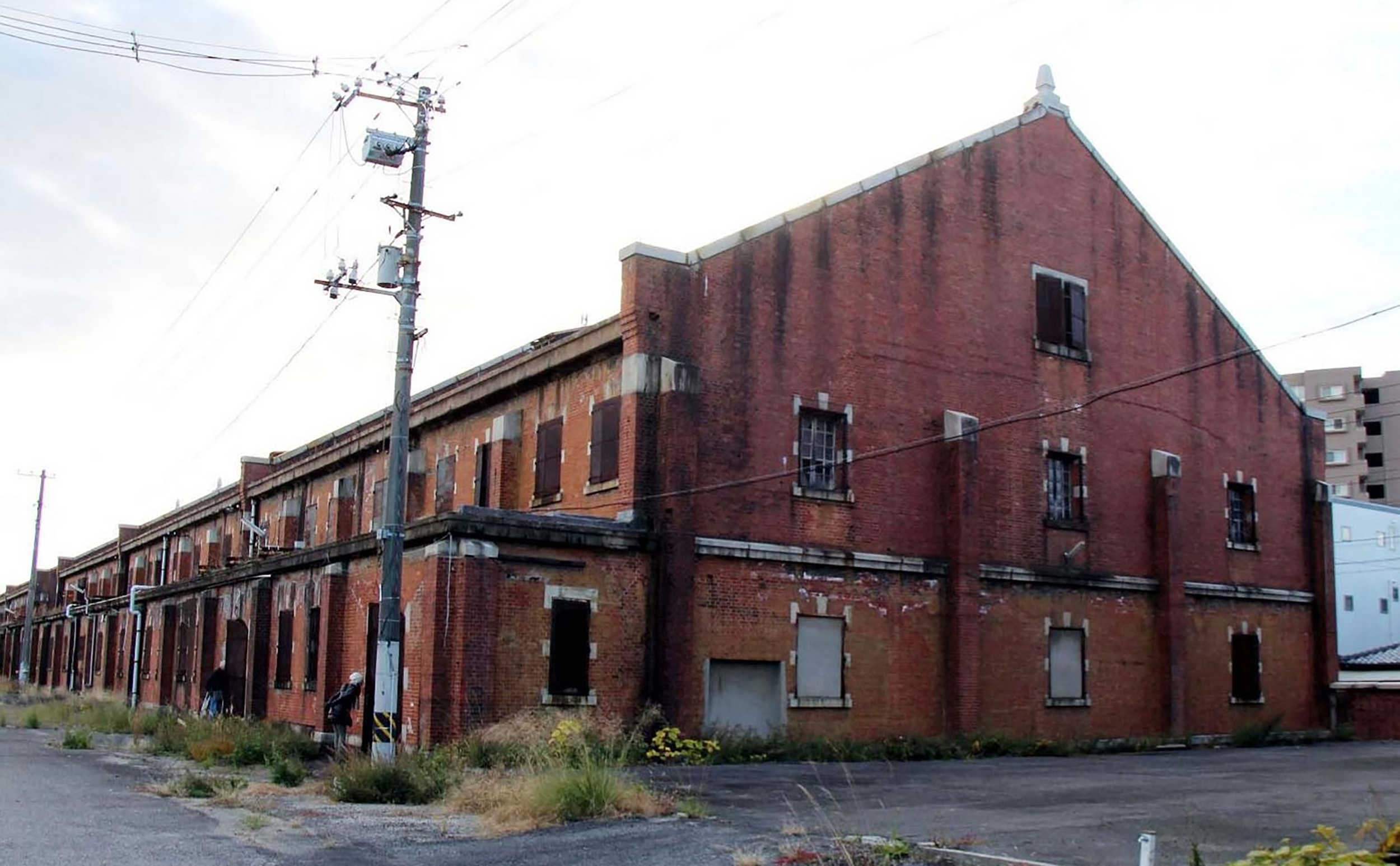Issue:
August 2023
The Chugoku Shimbun aims to nurture a new generation of reporters with its junior writers program
Among the huge number of journalists toiling away at the G7 international media center in Hiroshima in May was a group of school students determined to make the most of their hometown’s moment in the spotlight.
As members of the Chugoku Shimbun’s Junior Writers program, the teenage reporters interviewed several correspondents, including this one, for their G7 special publication.
The program, which now has 30 members – all but four of whom are girls – aims to promote understanding of Hiroshima’s history and to nurture a new generation of journalists with the help of staff from the regional newspaper.
The current crop of writers – ranging from first-year junior high school students to third-year high school students - hail from several schools in Hiroshima and work alongside adult journalists to produce a monthly page of articles titled Heiwa (Peace), according to Kyoko Niiyama, a former junior writer who is now a senior staff reporter for the Chugoku Shimbun.

“Reporting by our junior writers gives readers the opportunity to consider peace from the unique perspective of young people,” the newspaper, which has a daily circulation of 520,000, says on its website.
The newspaper’s award-winning peace media center has published more than 35,000 stories – all of which are free to view – with more than 7,500 available in English, while others have been translated into French, Chinese and Russian.
Launched 131 years ago, the Chugoku Shimbun has been at the center of Hiroshima’s association with the A-bomb since the morning of the attack.
The bomb destroyed its head office – located 900 meters east of the hypocenter – killing 114 people, or one third of the company’s employees. Three days later – on the day the U.S. dropped a second atomic bomb, on Nagasaki – the Chugoku Shimbun was already reporting on the devastation in Hiroshima, relying on other companies to print its morning edition on its behalf.
Today’s young writers cover an eclectic range of topics connected to the atomic bombing, its aftermath and the city’s recovery, as well as contemporary issues such as nuclear non-proliferation and the war in Ukraine.
August is a particularly busy month for the junior writers. This year, like every other, they will hand out questionnaires to foreign visitors to gauge their impressions of the city and write reports of events to mark the 78th anniversary of the 6 August 1945 A-bombing, in which an estimated 60,000 to 80,000 people died instantly, with the death toll rising to about 140,000 by the end of the year.
The international focus on Hiroshima in the run-up to the G7 gave the reporters an opportunity to tackle weighty subjects in interviews with foreign dignitaries, including the French and U.S. ambassadors to Japan and the British consul general in Osaka.
“We encourage them to ask tough questions,” said Yumi Kanazaki, director of the newspaper’s Hiroshima Peace Media Center, who noted that many of the envoys interviewed represented nuclear states. “It’s important to offer diverse perspectives on issues like nuclear weapons for our readers,” she said.
Several junior reporters shared their reason for getting involved in the program at a meeting at the newspaper’s headquarters in the run-up to the G7.
“We learned about hibakusha (survivors of the atomic bombings) at school, but we didn’t spend much time on them,” said Sakura Tanimura, who became a junior writer two years ago. “I wanted to spend more time with hibakusha and listen to their stories and to look more closely at international issues.”

Shino Shincho, a third-year junior high school student, has written about efforts to preserve an army clothing depot that stood 2.7 km from the A-bomb hypocenter.
Around 200 students have worked on the program since it was set up in 2007. At the G7, the young reporters interviewed journalists from Germany, South Africa, Argentina and Britain, among other countries, for an article on how the international media viewed the summit, whose focus quickly shifted to the war in Ukraine and practically ignored nuclear non-proliferation.
The world’s attention will again turn to Hiroshima this month as it prepares to mark the A-bomb anniversary. Junior writers from the Chugoku Shimbun will be out in force, seeking out interviewees, as will a good number of FCCJ members. If you spot a young person in school uniform, pen and notebook in hand, please do stop for a chat.
Justin McCurry is the Japan and Korea correspondent for the Guardian and the Observer, and author of War On Wheels: Inside Keirin and Japan’s Cycling Subculture (Pursuit Books, 2021).

